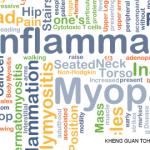NEW YORK (Reuters Health)—Statin use is associated with an increased likelihood of developing idiopathic inflammatory myositis (IIM), researchers from Australia report.
“[Although] the incidence of IIM is rare, with the increasing use of statins worldwide and the severity of this condition, this study highlights the need for increased awareness of the condition and the importance of early recognition and treatment,” Dr. Gillian E. Caughey from Adelaide Medical School and the University of Adelaide tells Reuters Health by email.
IIM is a group of rare autoimmune muscular disorders that can result in permanent disability and death. A statin-associated autoimmune myopathy appears to result from a specific autoantibody against HMG-CoA reductase. Its incidence is unknown.
Dr. Caughey’s team used data from the South Australian Myositis Database and North West Adelaide Health Study to examine the association between current exposure to statins and histologically confirmed IIM.
Statin exposure was significantly more common among IIM cases (30.8%) than among matched controls (21.5%), according to the July 30 JAMA Internal Medicine online report.1
After adjustment for other factors, including the higher prevalence of diabetes and lower prevalence of cardiovascular disease among cases, there was a 79% increased likelihood of statin exposure in patients with IIM in comparison with controls.
Half of the patients with necrotizing myositis were exposed to a statin, compared with 30.3% of those with polymyositis or inclusion body myositis and only 17.4% of those with dermatomyositis.
After excluding cases of necrotizing myositis from the analysis, statin exposure was 89% more likely in cases than in controls.
The proportion of patients with IIM exposed to statins increased from 5.6% in 2000–2002 to 48.8% in 2012–2014.
“We do not want the results of this study to undermine the benefits of statin use for reduction of primary and secondary cardiovascular risk,” Dr. Caughey says. “Statins are generally well tolerated by patients. Myalgia and myopathy are relatively common adverse effects associated with statin use; IIM is a rare condition and statin-induced IIM is even rarer. However, consideration of the potential risk of IIM in the assessment of net risks and benefits of statin use and early recognition of the disease will help to improve health outcomes for patients.”
“This study assessed statin exposure by different methods for cases (drug history in the medical record) and controls (prescription dispensing records), which may have resulted in misclassification bias,” writes Dr. Gregory Curfman, JAMA Internal Medicine Health Care Policy and Law editor from Brigham and Women’s Hospital and Harvard Medical School, Boston, in an editorial. “Thus, the association of IIM with statin therapy … cannot be considered definitive, although these are likely the best data currently available.”2

